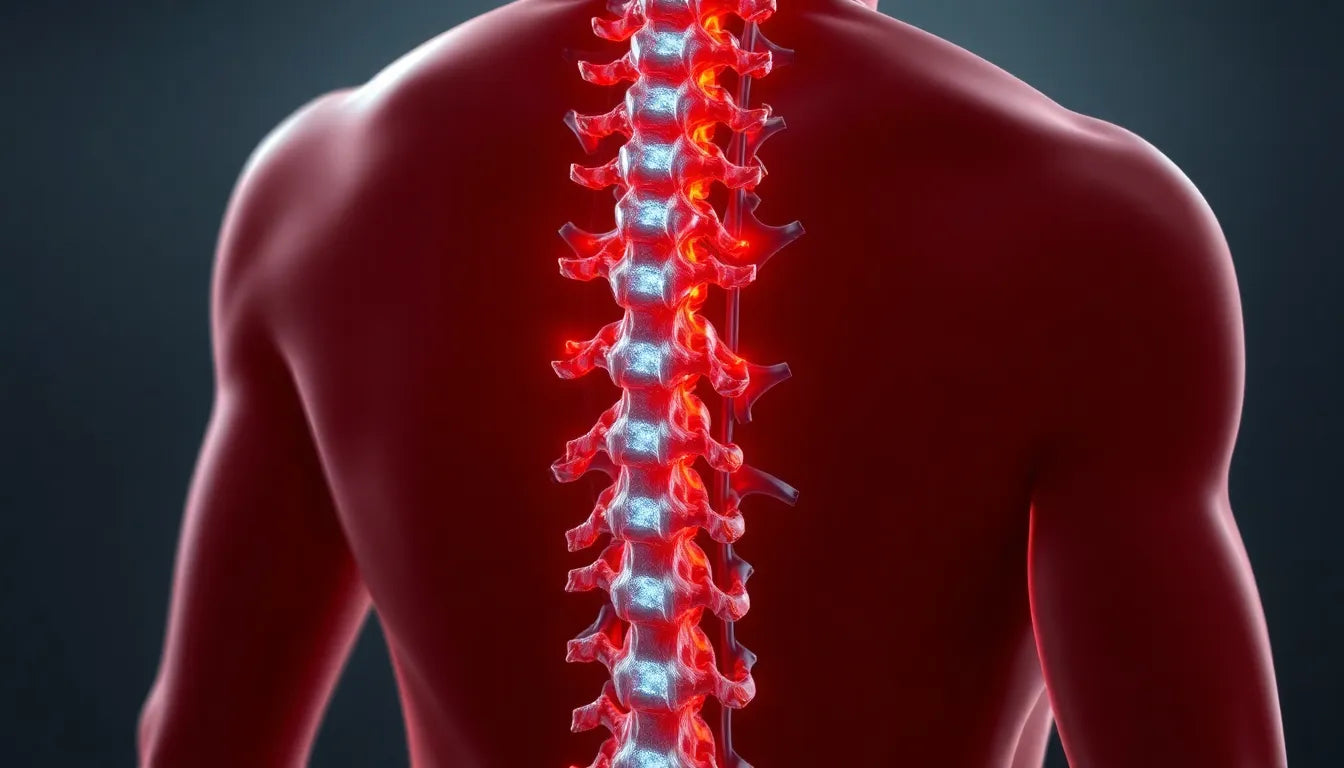Understanding the complexities of a herniated disc and the potential need for surgery is crucial for anyone experiencing persistent back pain. A herniated disc occurs when the soft inner gel of a spinal disc pushes through a crack in the tougher exterior casing. This condition can arise from various causes, including age-related wear and tear, sudden injury, or repetitive strain on the spine. The protrusion often presses on nearby nerves, leading to symptoms such as pain, numbness, or weakness in the back, legs, or arms, significantly impacting daily activities and quality of life.
When herniated disc surgery becomes a necessity
In many cases, initial treatment for a herniated disc involves non-surgical methods, including physical therapy, medications, and lifestyle changes. However, when these approaches fail to provide relief, or if the condition leads to severe symptoms like loss of bowel or bladder control, surgery may become a necessary consideration. Surgical intervention aims to alleviate pain and restore function by removing or repairing the damaged part of the disc, thus relieving pressure on the nerves.
Deciding to undergo surgery is a significant step and should be based on a thorough consultation with healthcare professionals. These experts can provide a precise diagnosis and discuss the most suitable treatment options, considering factors such as the severity of symptoms, overall health, and personal circumstances. Understanding the role of surgery in treating a herniated disc is essential for making informed decisions about one's health and future well-being.
The role of surgery in treating herniated discs
Surgery for a herniated disc is often seen as a pathway to relief when other treatments have not been successful. It can effectively reduce pain and improve mobility, allowing individuals to return to their daily activities with greater ease. There are several types of surgical procedures available, each with its own set of benefits and considerations. Common procedures include laminotomy, discectomy, and microdiscectomy, each designed to address specific aspects of the herniated disc.
Consulting with healthcare professionals is paramount when considering surgery. They can offer insights into the most appropriate procedure based on individual needs and the specific characteristics of the herniated disc. This collaborative approach ensures that patients receive personalized care tailored to their unique situation, maximizing the chances of a successful outcome.
In conclusion, while the thought of surgery can be daunting, understanding its role in treating herniated discs can provide clarity and reassurance. With the right medical guidance, surgery can be a viable option for those seeking relief from the debilitating effects of a herniated disc, paving the way for improved health and a better quality of life.
surgical procedures for herniated discs
When non-surgical treatments fail to alleviate the discomfort caused by a herniated disc, surgical options may offer the relief that patients are seeking. Two common procedures, laminotomy and discectomy, are often employed to address the issue effectively.
laminotomy and discectomy
A laminotomy involves removing a portion of the vertebral bone called the lamina to relieve pressure on the spinal cord or nerves. This procedure is often paired with a discectomy, where the herniated portion of the disc is removed. The primary goal is to reduce nerve compression and alleviate pain.
During surgery, the patient is typically under general anesthesia. The surgeon makes a small incision over the affected area of the spine, carefully removes the necessary bone and disc material, and then closes the incision. While complications are rare, they can include infection, bleeding, or nerve damage, which are managed through careful surgical techniques and post-operative care.
microdiscectomy
Microdiscectomy is a minimally invasive procedure that differs from traditional discectomy by using a smaller incision and advanced surgical tools, often with the aid of a microscope. This approach allows for less disruption of the surrounding tissues, leading to quicker recovery times and reduced post-operative pain.
Despite its benefits, microdiscectomy carries risks similar to other surgeries, including infection and nerve damage. However, its minimally invasive nature often results in fewer complications and a faster return to normal activities.
pre-operative and post-operative care
preparing for surgery
Proper preparation is essential for successful herniated disc surgery. Patients typically undergo a series of assessments, including imaging tests like MRI or CT scans, to confirm the diagnosis and plan the surgical approach. Patients are advised to follow specific guidelines, such as fasting before surgery and arranging for post-operative care and support at home.
what to expect after surgery
Post-surgery recovery varies depending on the individual and the type of procedure performed. Generally, patients can expect to resume light activities within a few weeks, with a full return to normal function taking several months. Physical therapy is often recommended to aid recovery, improve flexibility, and strengthen the back muscles.
Regular follow-up appointments with the surgeon are crucial to monitor healing and address any concerns that may arise during the recovery process. Adhering to post-operative instructions and attending scheduled check-ups are vital for achieving the best possible outcome.
comparing surgical techniques
Choosing the right surgical technique depends on several factors, including the severity of the herniated disc and the patient's overall health. Here's a comparison of laminotomy, discectomy, and microdiscectomy:
| Procedure | Invasiveness | Recovery Time | Success Rates | Potential Complications |
|---|---|---|---|---|
| Laminotomy | Moderate | Several weeks to months | High | Infection, bleeding, nerve damage |
| Discectomy | Moderate | Several weeks to months | High | Infection, bleeding, nerve damage |
| Microdiscectomy | Low | Few weeks | High | Infection, nerve damage |
Each procedure offers unique advantages and potential drawbacks. Consulting with a healthcare professional can help determine the most suitable approach based on individual needs and medical history.
Innovations and alternatives in herniated disc surgery
The field of spinal surgery is continuously evolving, with new technologies and techniques enhancing the treatment of herniated discs. One such innovation is the use of endoscopic spine surgery, which allows for even smaller incisions and faster recovery times compared to traditional methods. This technique uses a tiny camera and instruments inserted through a small incision, providing surgeons with a clear view of the affected area and enabling precise removal of the herniated disc material.
Another promising development is the application of artificial disc replacement. This procedure involves replacing the damaged disc with a synthetic one, aiming to preserve the natural movement of the spine and reduce the risk of future degeneration. While still relatively new, artificial disc replacement offers an alternative for patients who may not be ideal candidates for fusion surgery.
For those seeking non-surgical options, treatments such as physical therapy, chiropractic care, and epidural steroid injections can be effective in managing symptoms. These approaches focus on relieving pain and improving function without the need for invasive procedures. However, they may not be suitable for everyone, particularly if the herniated disc is causing severe symptoms or neurological deficits.
Concluding thoughts on herniated disc surgery
Herniated disc surgery can be a life-changing procedure for those suffering from persistent pain and mobility issues. With advancements in surgical techniques and a range of treatment options available, patients have more choices than ever before. It is crucial to engage in open discussions with healthcare providers to explore the most appropriate course of action based on individual circumstances and medical history.
The journey to recovery involves not just the surgical procedure itself but also a commitment to post-operative care and rehabilitation. By understanding the options and potential outcomes, patients can make informed decisions that align with their health goals and lifestyle needs.
Frequently asked questions
What is a herniated disc?
A herniated disc occurs when the inner gel-like core of a spinal disc protrudes through the outer layer, often due to age-related degeneration or injury. This can lead to nerve compression, causing symptoms such as pain, numbness, or weakness.
How is herniated disc surgery performed?
Surgery involves removing or repairing the damaged disc material to relieve pressure on the nerves. Common procedures include discectomy, microdiscectomy, and laminotomy, each with specific techniques suited to the patient's condition.
What are the risks of herniated disc surgery?
While generally safe, herniated disc surgery carries risks such as infection, bleeding, and nerve damage. These are mitigated through advanced surgical techniques and comprehensive post-operative care.
How long is the recovery period after herniated disc surgery?
Recovery varies but typically involves several weeks to months. Patients often resume light activities within a few weeks, with full recovery taking longer, depending on the surgery type and individual health factors.
Are there alternatives to surgery for a herniated disc?
Non-surgical treatments such as physical therapy, chiropractic care, and epidural steroid injections may be effective for some patients. However, surgery may be necessary if these methods do not provide sufficient relief or if severe symptoms are present.























